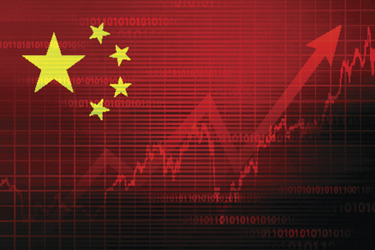China's Rising Role On The Global Stage In The Oncology Market
By Matt Stebbings, senior consultant, Lifescience Dynamics

China's pharmaceutical industry is emerging as a formidable contender when it comes to fighting cancer, fueled by increased attention from Western pharma companies seeking to tap into this growing market, as well as comprehensive reforms and enhancements to China’s regulatory framework. What does this mean to U.S. pharmaceutical companies in the oncology field? It means both competition and opportunity.
The oncology pharma market over the years has largely been dominated by European and U.S. companies. However, China’s efforts at regulatory reform are paying off. China’s version of the Food and Drug Administration, the National Medical Products Association (NMPA), has streamlined its processes, making it faster and easier for medications to be approved. In fact, roughly 100 new cancer drugs defined as new molecular entities were approved in China between 2005 and 2021.
Although major Chinese oncology drugs have obtained approval outside of China, they have encountered difficulties in capturing substantial market share worldwide. With the ongoing expansion of the Chinese biopharma sector, there is an expectation for innovative oncology drugs, potentially the first of their kind, to emerge from China and compete on the international market.
China’s Pharma Makeover
The pharmaceutical industry in China is steadily expanding, ranking as the world's second largest after the United States, and it is expected to reach $119 billion in revenue this year. Oncology drugs are projected to play a big part of this growth, boasting a projected market volume of more than $23 billion this year.
It has been quite a turnaround. The country’s national pharmaceutical regulatory body was downgraded in importance in 2008 due to corruption and scandals, but later was restructured and elevated to a ministry-level agency.
After several name changes, the administration was further overhauled and changed to the NMPA, now incorporated into the State Administration for Market Regulation, which is considered the “sheriff” of Chinese markets.
Drug Approval Pathways
Improvements to China’s regulatory capabilities have allowed the NMPA to implement a more structured and effective regulatory model for the approval of new drugs. The number of new drug approvals within China shows no signs of slowing down. In fact, the annual number of new drug approvals increased dramatically since 2017, reaching a record high of 70 in 2021.
Several drug pricing strategies have been experimented with in China, aiming to enhance advantages for consumers and healthcare providers alike. In 2017, China updated the National Reimbursement Drug List (NRDL), which determines which drugs are 100% reimbursed by the government or partially reimbursed by either provincial or central governments. The NRDL is now updated annually, reflecting evolving healthcare priorities. The inclusion process, however, remains difficult and many prominent Western drugs are still not available in China.
Many major drug companies are also unwilling to negotiate discounts and those that do may find that the unavoidable price discounts may offset revenue benefits from NRDL inclusion. For example, the price of Merck’s cetuximab decreased by 69% because of these regulatory changes. Seventeen cancer treatment drugs that were added to the NRDL in 2017 have since seen their prices decrease significantly.
Made In China
As Chinese oncology drugs gain clout, expect these drugs to continue to penetrate the global market in the next few years. One notable milestone was U.S. approval of toripalimab as a first-line treatment for adults with metastatic or recurrent locally advanced nasopharyngeal carcinoma (NPC) in October 2023. Even with a significant markup — a single-dose vial costs $280 in China — it was a lot cheaper than the wholesale price in the U.S. ($8,892). Expect more drug approvals this year to intensify competitive pricing pressures for the American oncology drug market.
Another area where China is showing promise is in the advancement of personalized oncology therapies, such as biomarker-targeted ADCs, despite the potentially higher costs associated with personalized treatments because of biomarker testing and tailored treatments. Development of personalized oncology treatments represents a collective goal for the global pharmaceutical oncology industry. China's lower costs, increased productivity, and innovation could position it to leapfrog the West and emerge as a leader in specialized oncology treatment within the next five to 10 years.
Getting In On The Action
With faster approval options, there are incentives to pursue drug approval in the Chinese market. China's pharmaceutical companies are making significant strides in courting mergers and acquisitions, signaling a notable shift in the global landscape. Rather than solely relying on developing their own drugs and navigating the complex Chinese market independently, international pharmaceutical firms are increasingly opting to merge with or acquire Chinese companies already possessing established drug portfolios. This strategy offers a streamlined entry into the Chinese market, leveraging the expertise and existing assets of domestic firms. According to a report from international law firm Goodwin, there were 240 life sciences licensing deals reported in China in 2023, marking a nearly 50% rise from 2021. Among these, 70 out-license deals saw Chinese firms licensing drugs and technologies to overseas counterparts, with a disclosed combined value exceeding $35 billion.
Western pharmaceutical companies continue to make high-profile acquisitions or licensing deals with Chinese oncology companies, recognizing the potential of China's growing biopharmaceutical sector. A recent example is AstraZeneca’s acquisition of Gracell for $1.2 billion, bringing innovative methodologies for developing CAR-T medicines and promising advancements primarily in hematology and oncology treatments.
These new routes and systems resulting from the reforms are encouraging domestic and international drug development within China. For instance, there is wider inclusion of Chinese patients into International Multi-Centre Trials (IMCTs), making it much easier for international companies to commence IMCTs within China. According to GlobalData, China accounted for 27.7% of the global clinical trials activity in 2022, marking a significant rise compared to the 16.5% average over the past decade. The International Clinical Trials Registry Platform (ICTRP) of the World Health Organization noted a substantial increase in registered trials in China. This surge has propelled the Western Pacific region to the forefront, boasting the highest annual number of trial registrations among all WHO regions.
As collaborations and acquisitions between international and Chinese firms increase, the dynamics of the pharmaceutical industry are undergoing significant transformation, with China emerging as a key player in driving innovation and market growth. China's pharmaceutical landscape is poised to continue evolving, driven by ongoing healthcare reforms and regulatory advancements. This growth sets the stage for unique and potentially lucrative opportunities for multinational pharmaceutical companies seeking to capitalize on the expanding global market, particularly for blockbuster products.
Challenges And Strategies For Firms
China’s regulatory environment has rapidly shifted from being under-resourced, mismanaged, and stagnant to significantly more capable and more closely aligned with global standards.
International companies need to reassess their pricing strategies because of the competitiveness of China's pharmaceutical market, particularly in terms of pricing. Establishing dedicated teams for China-specific market access, regulatory compliance, and commercial operations is key to creating and implementing an effective strategy.
Despite ongoing reforms, navigating and predicting the impact of future regulatory changes in China remains challenging. Multinational pharmaceutical corporations need to stay informed of these developments and access local expertise to translate regulatory changes into wins for their global initiatives. Analyzing the subtleties between regional and national regulatory updates, their implementation timelines, and their potential implications is critical for optimizing drug development, market penetration, and commercial strategies in a fiercely competitive landscape.
It remains difficult to effectively gauge the clinical value that a product may hold within the Chinese market. Accurate data regarding burden of disease, epidemiology, and ethnic variations in disease characterization are still relatively lacking in China compared to Western counties. This can pose a challenge for firms when strategizing entry into the Chinese market. Market research and competitive intelligence are essential when it comes to navigating a pharma market position and leveraging key insights to best optimize launch and development plans specific to this population and geography.
About The Author:
 Matt Stebbings is a senior consultant at Lifescience Dynamics. He has experience with various biotech and pharma development and commercialization frameworks, as well as with novel drug development landscape analysis. He has special interest and experience in the Chinese regulatory environment, and has extensive analytical experience relating to oncology and associated drug commercialization paths within the Chinese market. He has a M.Sc. in medical biotechnology and business management from the University of Warwick.
Matt Stebbings is a senior consultant at Lifescience Dynamics. He has experience with various biotech and pharma development and commercialization frameworks, as well as with novel drug development landscape analysis. He has special interest and experience in the Chinese regulatory environment, and has extensive analytical experience relating to oncology and associated drug commercialization paths within the Chinese market. He has a M.Sc. in medical biotechnology and business management from the University of Warwick.
